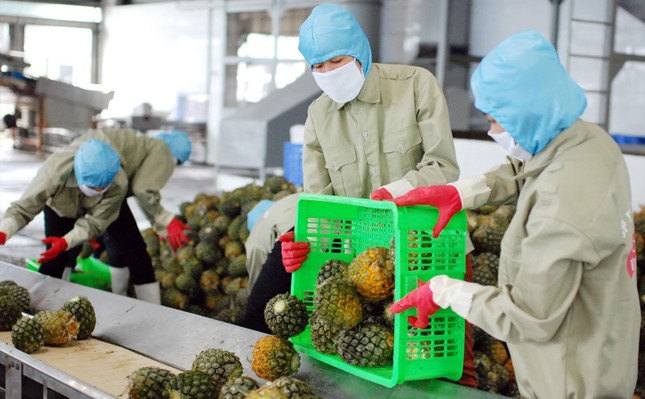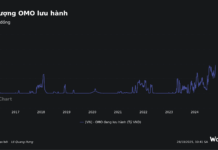
Export turnover of vegetables and fruits continues to increase. Photo: Nguyen Bang
According to the Ministry of Industry and Trade, the Industrial Production Index (IIP) in January increased significantly by 18% compared to the same period last year. As many as 60 out of 63 localities saw an increase in the production index. Particularly, following the recovery trend of production in the last months of the previous year, the processing and manufacturing industry gradually regained its leading role in industrial development with a growth rate of 19%. Many industries experienced double-digit growth rates, such as food processing (up 17%), tobacco production (up 34%), textile (up 46%), garment production (up 20%), electronic equipment manufacturing (up 43%), furniture manufacturing (up 66.7%), and motor vehicle production (up 24%).
Many key industrial products also showed double-digit growth rates compared to the same period last year, including liquefied petroleum gas (LPG), various types of petroleum, rolled steel, automobiles, motorcycles, fabric made from natural fibers, regular clothing, leather footwear, NPK fertilizers, etc.
In terms of exports, there are positive signals with various sectors appearing as the first month of 2024 estimates a trade surplus of $2.9 billion. The total import and export turnover is estimated to reach $64 billion, an increase of 37% compared to the same period last year. Specifically, exports increased by up to 42%. There are 7 items with export turnover exceeding $1 billion, including wood and wood products ($1.4 billion), textiles and garments ($2.9 billion), footwear ($1.8 billion), computers, electronic products and components, phones and components ($5.8 billion), machinery, equipment, tools, and other spare parts ($3.8 billion), and transportation vehicles – spare parts ($1.3 billion).
“The agricultural and aquatic product group continues to be a bright spot in the country’s export picture with an estimated turnover of $3.3 billion. In particular, cassava and cassava products increased by 93%, reaching $274 million. Following that, vegetables and fruits increased by 24%, reaching $510 million. Cashews, tea, coffee, rice, and black pepper all had good growth rates,” the Ministry of Industry and Trade said. The ministry also believed that agricultural exports would be favorable with the continuing increase in prices, while prices of items in the processing industry still tended to decrease.
Aquatic product exports increase by 60%
Regarding exports, the Import and Export Department (Ministry of Industry and Trade) also stated that Vietnam’s aquatic product exports reached $730 million in January 2024, an increase of 60% compared to the same period last year. According to the Import and Export Department, Vietnam’s aquatic product exports will continue to recover positively in 2024, with two key aquatic products, shrimp and pangasius catfish, showing strong recovery.
According to the Ministry of Industry and Trade, there are positive signals with various sectors appearing as the first month of 2024 estimates a trade surplus of $2.9 billion.
At the recent discussion on solutions to address difficulties for import-export businesses in the Red Sea area, Deputy Secretary General of the Vietnam Association of Seafood Exporters and Producers (VASEP) Nguyen Hoai Nam said that the tension in the Red Sea is a concern for the export business community due to a sharp increase in transportation costs. In the past month, the total freight charges for 1 container transporting goods to the West Coast increased by 70%. The export of refrigerated goods to Europe has nearly quadrupled. The tension in the Red Sea has also caused a shipping time from Asia to Europe to be extended to 14 days, creating difficulties for export businesses.





































